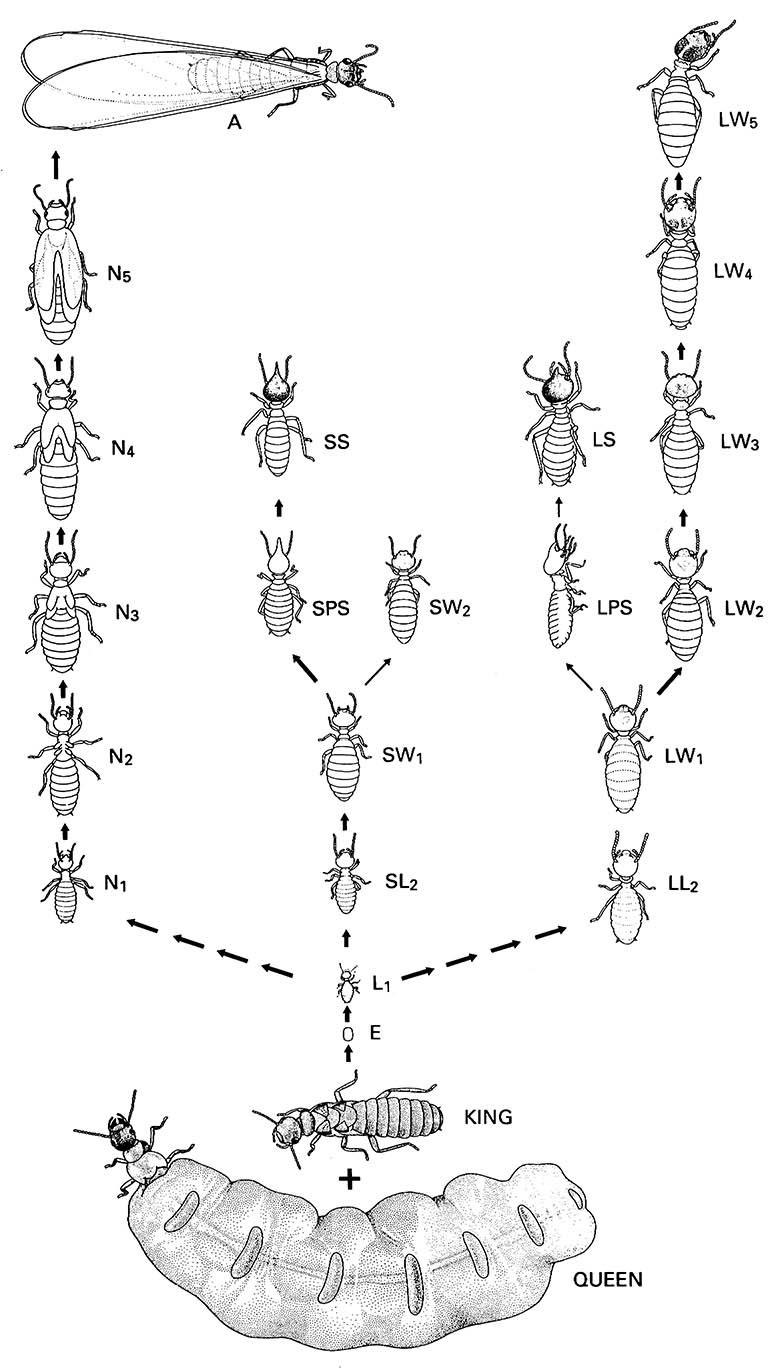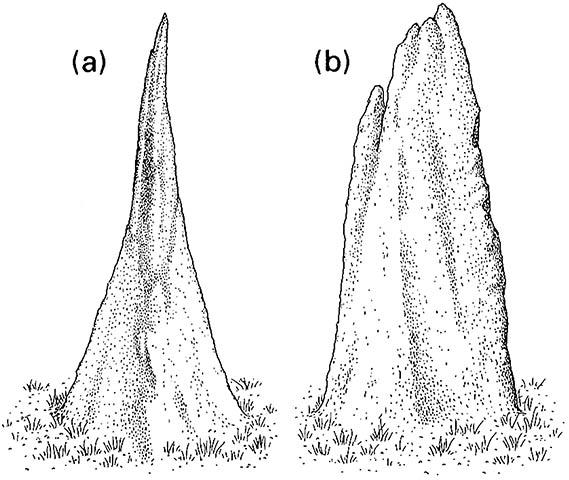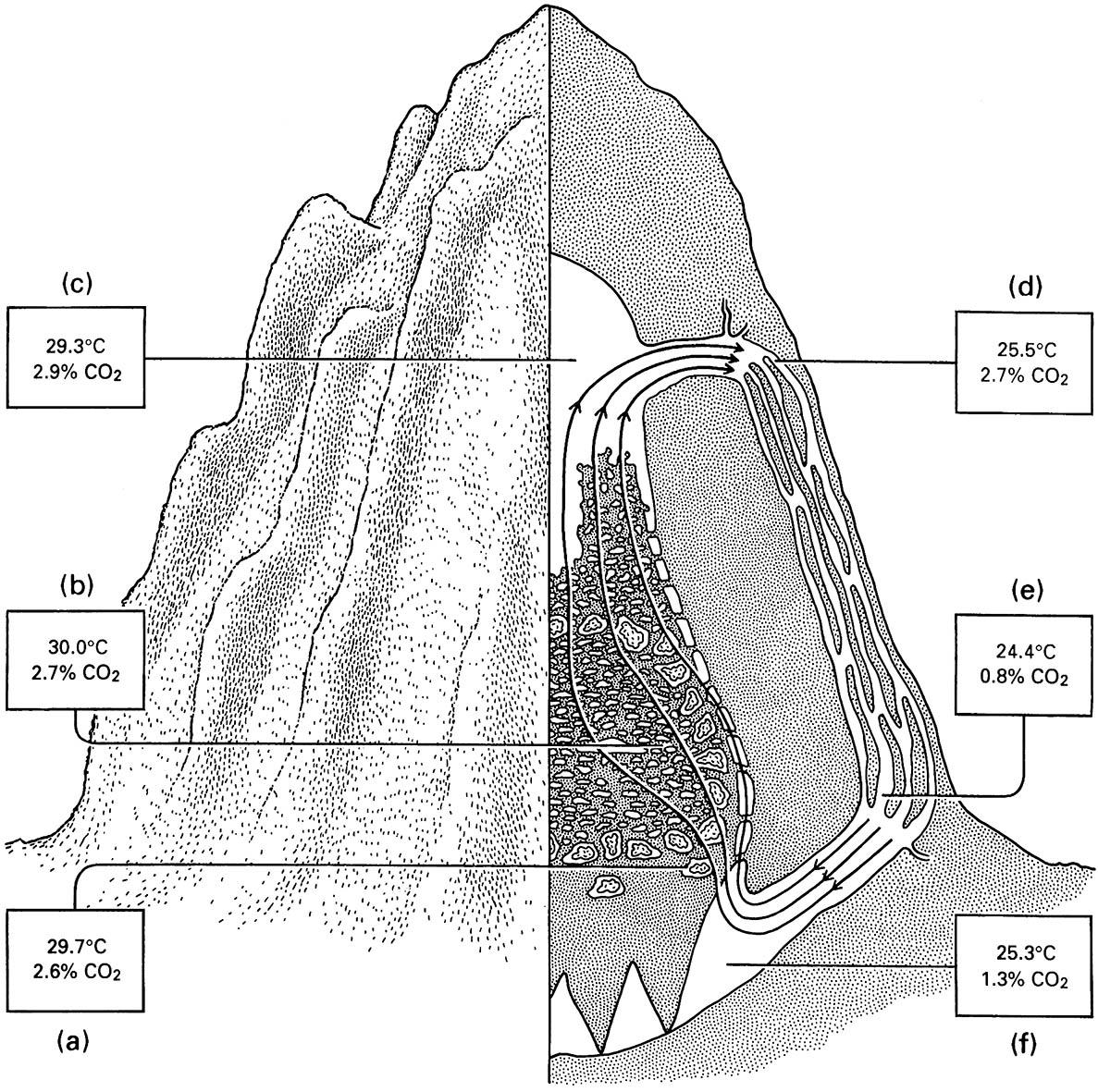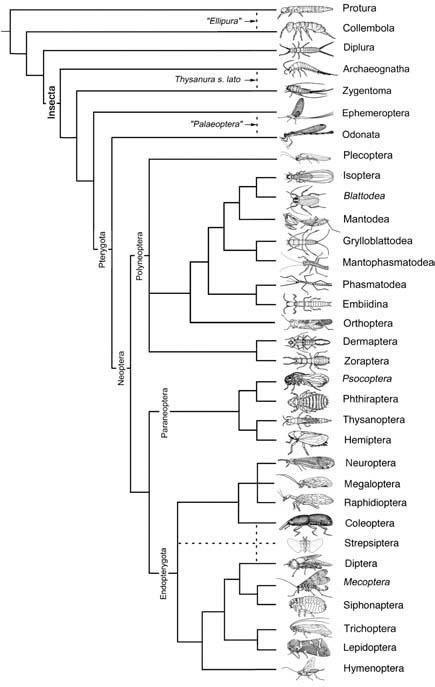Box 12.3. Isoptera (termites)
The Isoptera is a small order of some 2600 described species of hemimetabolous neopterans, living socially with polymorphic caste systems of reproductives, workers, and soldiers (section 12.2.4; Fig. 12.8). All stages are small to moderately sized (even winged reproductives are usually <20 mm long). The head is hypognathous or prognathous, and the mouthparts typically blattoid and mandibulate, but varying between castes: soldiers often have bizarre development of their mandibles or possess a nasus (as illustrated on the left for the mandibulate Coptotermes and on the right for the nasute Nasutitermes, after Harris 1971). The compound eyes are frequently reduced, and the antennae are long and multisegmented with a variable number of segments. The wings are membranous with restricted venation; fore and hind wings are similar, except in Mastotermes, which has complex venation and an expanded hind-wing anal lobe. All castes have a pair of one- to five-segmented cerci terminally. External genitalia are absent, except in Mastotermes in which the female has a reduced blattoid ovipositor and the male a membranous copulatory organ. Gonads are poorly developed in adult soldiers and worker castes.
Internal anatomy is dominated by a convoluted alimentary tract including an elaborated hind gut, containing symbiotic bacteria and, in all species except the Termitidae, also protists (section 9.5.3 discusses fungal culture by Macrotermitinae). Food exchange between individuals (trophallaxis) is the sole means of replenishment of symbionts to young and newly molted individuals and is one explanation of the universal eusociality of termites.
Nests may be galleries or more complex structures within wood, such as rotting timber or even a sound tree, or above-ground nests (termitaria) such as prominent earth mounds (Figs. 12.9 & 12.10). Termites feed predominantly on cellulose-rich material; many harvest grasses and return the food to their subterranean or above-ground nest mounds.
Isoptera belong to a clade called Dictyoptera. Generally seven families and 14 subfamilies of termites are recognized. For phylogenetic relationships of the Dictyoptera see section 7.4.2 and Figs. 7.2 and 7.4.


Heavy arrows indicate the main lines of development, light arrows the minor lines. A, alate; E, egg; L, larva; LL, large larva; LPS, large presoldier; LS, large soldier; LW, large worker; N, nymph; SL, small larva; SPS, small presoldier; SS, small soldier; SW, small worker. The numbers indicate the stages. (Pathways based on Watson & Abbey 1985)

(a) the north-south view, and (b) the east-west view. (After Hadlington 1987)

Measurements of temperature and carbon dioxide are shown in the boxes for the following locations: (a) the fungus combs; (b) the brood chambers; (c) the attic; (d) the upper part of a ridge channel; (e) the lower pa rt of a ridge channel; and (f ) the cellar. (After Lüscher 1961)

Broken lines indicate uncertain relationships. Thysanura sensu lato refers to Thysanura in the broad sense. (Data from several sources)

The broken line indicates a paraphyletic taxon. (Data from several sources)



